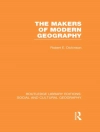This book covers the landscape, geography and environment of the Sierra Nevada in Spain. The Sierra Nevada hosted the last glaciers in southern Europe. Today, it is one of the most important centers of plant diversity in the western Mediterranean and one of the most outstanding in Europe. This massif has ideal conditions to analyze past environments as well as the effects of global change on ecosystems. This can be seen in the large number of projects that are being conducted within the umbrella of the Sierra Nevada Global Change Observatory. This book summarizes all the scientific knowledge available about this massif, from the geomorphological and ecological perspectives to the recent spatial adaptive management and Open Science initiatives.
Focusing on the very sensitive mountain environment of Sierra Nevada, the book intends to be a reference for many people interested in mountain processes. The audience would include scientists from all disciplines, but it would also target on an audience beyond the academia (territorial managers, environmentalists, mountaineers, politicians, technicians, etc.).
Tabella dei contenuti
Geographic Uniqueness of the Sierra Nevada in the Context of the Mid-latitude Mountains.- Biotic Uniqueness of the Sierra Nevada as a Hotspot of Biodiversity.- Singular Cultural Landscapes of the Sierra Nevada.- Scientific Knowledge Generated in the Sierra Nevada: Bibliographic Review in WOS Since 1970.- The Geological Setting.- Glacial Geomorphology of the Massif.- Reconstruction of Past Environments Using Lake Sedimentary Records.- Modern Periglacial Environment and Permafrost.- Variability and Recent Trends.- Snow Dynamics, Hydrology and Erosion.- Altitudinal Migrations and Changes in the Composition of High Mountain Plant Communities.- Altitudinal Migrations and Changes in the Composition of Animal Communities.- Dynamics of Forest Systems Under Land Use and Climatic Change Scenarios.- Resilience of Montane Ecosystems to Major Disturbances (fires).- Migrations Rivers.- High Mountain Lakes as Remote Sensors of Global Change.- Paleolimnological Indicators of Climate Change.- Atmospheric Inputs and Drastic Alterations in Food Webs and Ecosystems Processes.- Remote Sensors Monitoring of Functional Aspects of Terrestrial and Aquatic Ecosystems.- Managing the Uniqueness of Sierra Nevada Ecosystems Under Global Change: Adaptive Projects.- Incorporation of Traditional Knowledge in Agrobiodiversity for a Sustainable Mountain Economy.- Data Model, E-infrastructure Services and Virtual Research Environments (VRE).- Advancing Open Science in Sierra Nevada: Current Citizen Science Campaigns.- Filling the Gaps in Research, Management and Social Connection.












